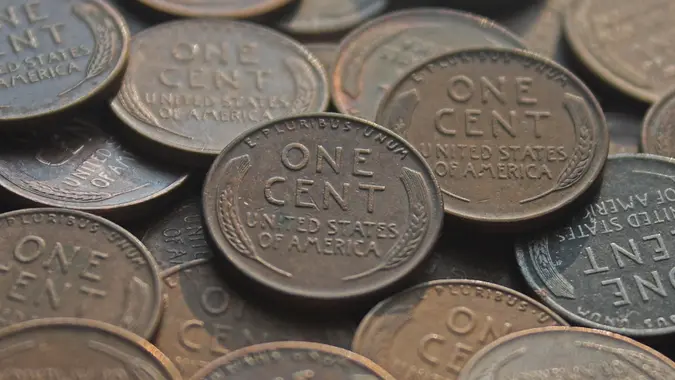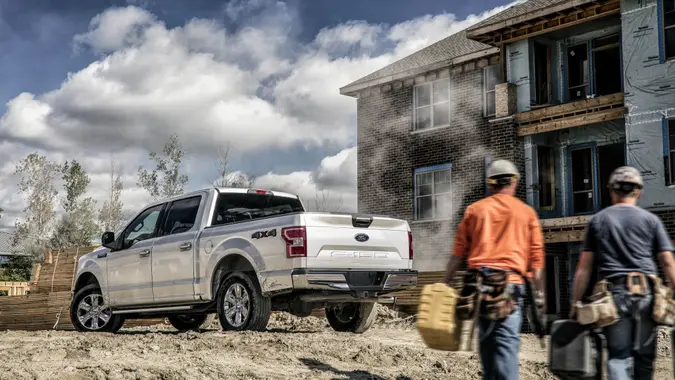This Income Is Considered Poverty Level in 2025

Commitment to Our Readers
GOBankingRates' editorial team is committed to bringing you unbiased reviews and information. We use data-driven methodologies to evaluate financial products and services - our reviews and ratings are not influenced by advertisers. You can read more about our editorial guidelines and our products and services review methodology.

20 Years
Helping You Live Richer

Reviewed
by Experts

Trusted by
Millions of Readers
The idea of the poverty line dates back to 1963, when Mollie Orshansky, a statistician for the Social Security Administration, developed a method to measure how many families were unable to afford basic necessities. She based her poverty guidelines and calculations on the cost of feeding a family of four with a rudimentary food plan plus other necessary living expenses.
Are You Rich or Middle Class? 8 Ways To Tell That Go Beyond Your Paycheck
Today, the U.S. Census Bureau still uses these calculations to determine what income is considered poverty level. The federal poverty level (FPL) affects everything from health insurance programs and expanded Medicaid to eligibility for premium tax credits. Here’s a look at what it means to live in poverty in 2025.
The Poverty Threshold in 2025
According to the most recent report from the U.S. Census Bureau, the poverty threshold for a family of four in the contiguous states is $32,150 annually. For an individual, the poverty threshold is $15,650.
The U.S. Department of Health and Human Services uses the Census Bureau threshold to determine who is eligible for certain government assistance programs, like SNAP. Under their guidelines, a family of four is considered impoverished if they earn $30,000 or less per year.
To put those numbers in perspective, the median household income in 2025 is $75,580 — nearly three times the poverty threshold.
2025 Poverty Guidelines by State
Where you live in the United States has an impact on what is considered below the poverty line or within the poverty threshold. Here is a breakdown of 2025 poverty guidelines by region or state.
48 Contiguous States and Washington D.C.
- $15,650: 1-person household
- $21,150: 2-person household
- $26,650: 3-person household
- $32,150: 4-person household
- Add $5,500 for each additional person after eight
Alaska
- $19,550: 1-person household
- $26,430: 2-person household
- $33,310: 3-person household
- Add $6,880 for each additional person after eight
Hawaii
- $17,990: 1-person household
- $24,320: 2-person household
- $30,650: 3-person household
- Add $6,330 for each additional person after eight
How Many Americans Live in Poverty?
According to the most recent U.S. Census Bureau data, the official poverty rate fell 0.4 percentage points to 11.1% in 2023. There were 36.8 million people in poverty, and here are some other key takeaways:
- Between 2022 and 2023, the official poverty rate decreased for White and non-Hispanic White individuals.
- The supplemental poverty measure (SPM) child poverty rate increased by 1.3 percentage points to 13.7 % in 2023.
- Social Security continues to be the largest anti-poverty program, moving 27.6 million individuals out of SPM poverty.
- The share of the population with resources below 50% of their poverty threshold was higher.
Poor Americans Spend Larger Percentages of Their Income on Basic Necessities
Americans living in poverty tend to feel the effects of inflation more than the average American. As a result, they are spending greater portions of their income to cover basic expenses like housing and food.
According to Bureau of Labor Statistics data, while the average American household spends 33.8% of its income on housing, American households earning less than $30,000 spend 41.2%. When it comes to food, the average American household spends 12.4% of its income, while households earning less than $15,000 spend 16.7% and those earning between $15,000 and $30,000 spend 14.1%.
Poor households also spend more on healthcare expenses. The average American household devotes 8.1% of its income to healthcare, compared to 8.6% for those earning less than $15,000 and 10.9% for those earning between $15,000 and $30,000.
On the other hand, impoverished Americans spend less proportionately on “nice to have” expenses. The average American household spends 5.3% of its income on entertainment, while those earning under $15,000 spend 4.8% and those earning between $15,000 and $30,00 spend 4.6%.
Additionally, the average American household puts 11.8% of its income toward personal expenses and insurance, while those earning less than $15,000 earmark just 1.2%, and those earning between $15,000 and $30,000 dedicate 2.8%.
Gabrielle Olya contributed to the reporting for this article.
 Written by
Written by  Edited by
Edited by 

























